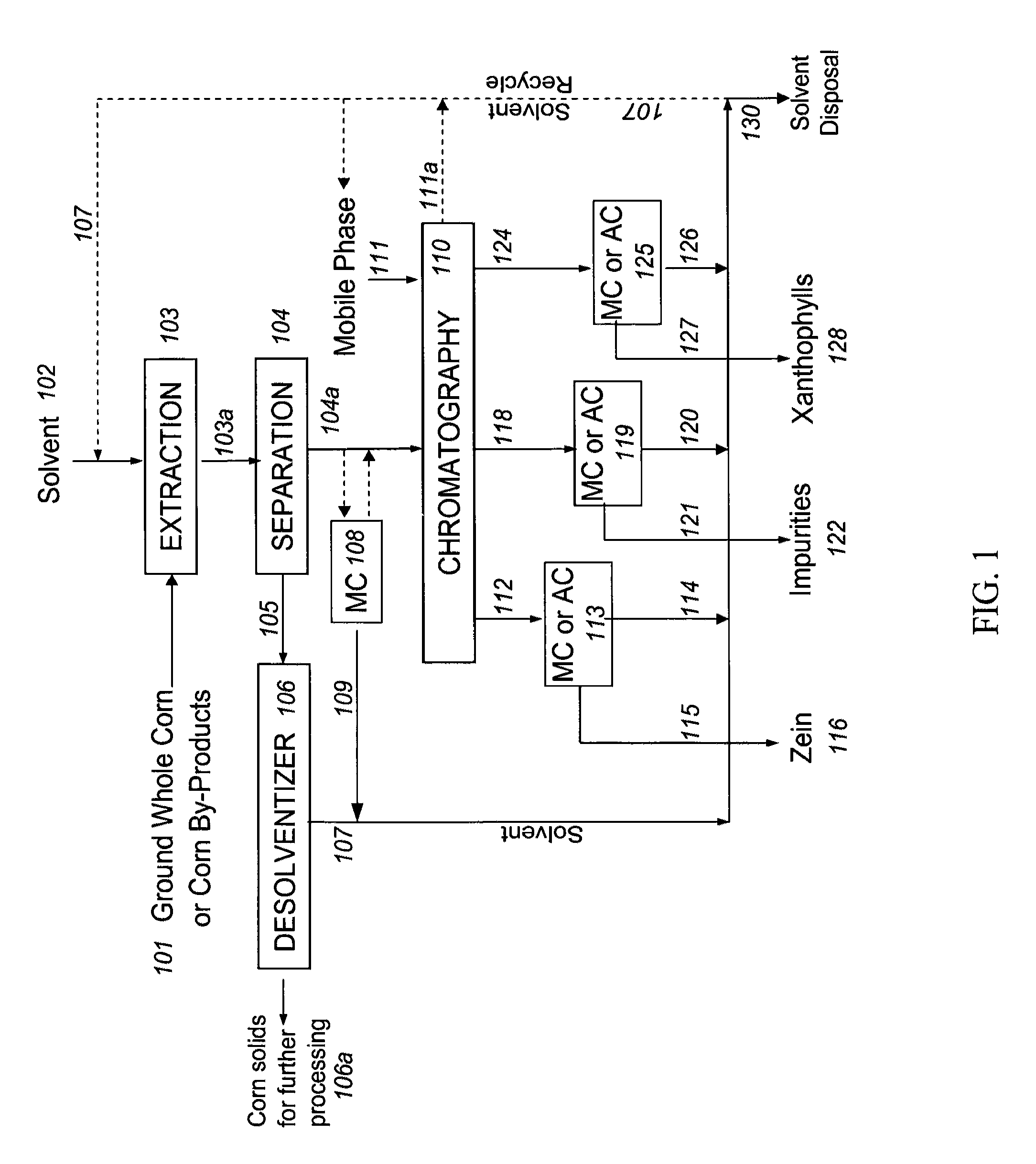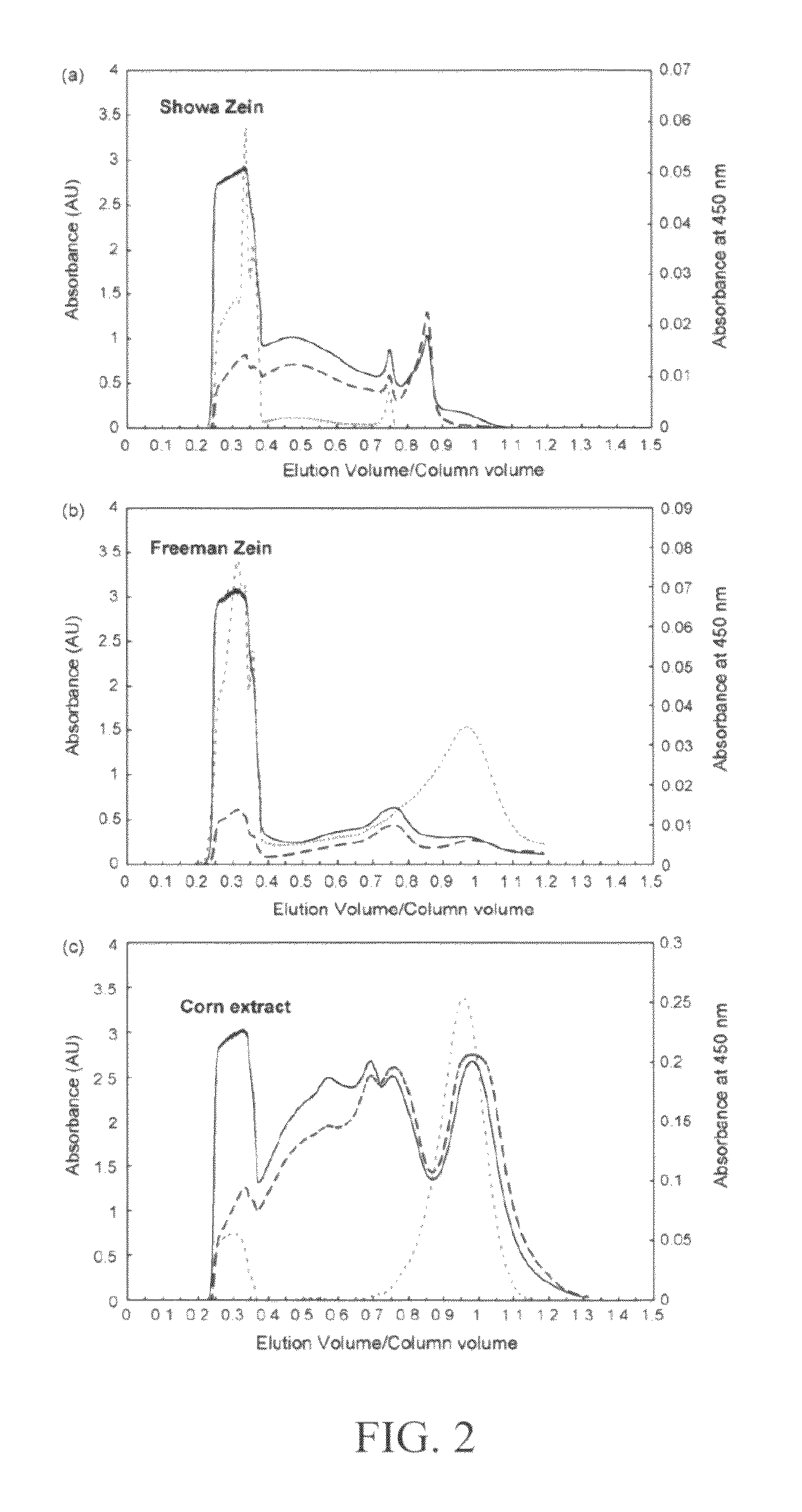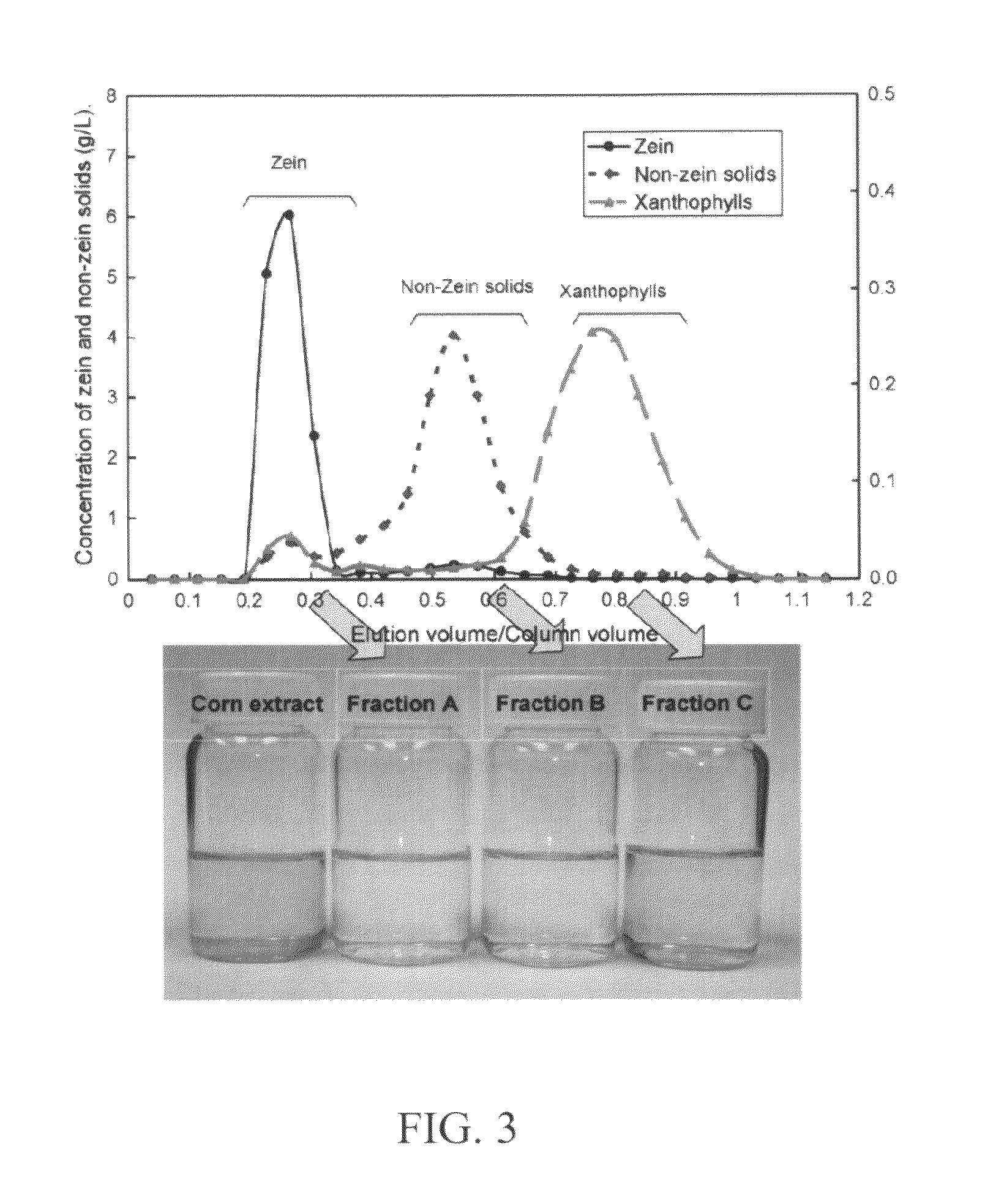Method and system for production of zein and/or xanthophylls using chromatography
a technology of xanthophylls and chromatography, which is applied in the field of production of proteins and/or xanthophylls from corn, can solve the problems of limiting the potential use of extracted zein, conventional purification methods usually do not provide high yield and purity simultaneously, and do they produce zein that is devoid
- Summary
- Abstract
- Description
- Claims
- Application Information
AI Technical Summary
Benefits of technology
Problems solved by technology
Method used
Image
Examples
example 1
[0049]In an experiment evaluating an exemplary method for extraction of zein and xanthophylls from corn, an extraction method was adapted from R. Shukla, M. Cheryan, and R. E. DeVor, “Solvent extraction of zein from dry-milled corn,” Cereal Chemistry, 77, 2000, pp. 724-730. Raw whole corn (yellow dent #2) was obtained from Anderson Grain Co., Champaign, Ill. The corn was ground using a bench top hammer mill, IKA MF 10.2 (IKA Works Inc., Wilmington, N.C.) with a 1 mm mesh. Ethanol (200 proof; USP grade) was procured from Aaper Alcohol and Chemical Co., Shelbyville, Ky. The water was distilled, deionized, and microfiltered using a 0.2 μm Maxi Capsule Filter (Pall Gelman Lab, Ann Arbor, Mich.). Extraction was done in an Erlenmeyer flask using a solvent:solids ratio of 4:1 (4 L of 70% ethanol per kg of corn) at 40° C. for 30 min. A Nuova II stirring hot plate (Thermolyne, Dubuque, Iowa) was used for temperature control and mixing. The slurry was then filtered with Whatman paper #1 (11 μ...
example 2
[0071]The corn extract was preconcentrated by membrane concentration (MC) to improve the productivity of the chromatography step. Several nanofiltration and / or reverse osmosis membranes are available for this purpose, such as the DK from GE and SW30 from FilmTec. The concentration was performed in a dead end type Amicon cell at 50° C. and 400 psi to a concentration factor of 16×. The corn extract had an initial total solids of 15 g / L and an average flux of 5 liters per square meter per hour (LMH). Rejection of the solids was over 99%. The permeate was essentially colorless and can be recycled.
[0072]To investigate the effect of mass loading on column productivity, the 16× corn extract was diluted with various volumes of 70% ethanol and injected onto the Tricom column containing the LH-20 resin. The mobile phase for these experiments was 70% ethanol, as described earlier in Example 1. Ten mL fractions were collected after the void volume and analyzed for total solids and nitrogen cont...
example 3
[0073]To demonstrate the post-chromatography membrane concentration step, the fractions from the LH20 column shown in Table 1 were concentrated by membrane concentration (e.g., steps 113, 119, and 125 in FIG. 1). Several nanofiltration and / or reverse osmosis membranes are available for this purpose, such as the DK from GE and SW30 from FilmTec. The concentration was performed in a dead end type Amicon cell at 50° C. and 400 psi to a concentration factor of 15×. The zein fraction, with initial total solids of 4 g / L resulted in a flux of 10 liters per square meter per hour (LMH), while the xanthophylls fraction (0.1 g / L) had an average flux of 15 LMH with the SW30 membrane. Rejection of the solids in all cases was over 99%. The permeate in these concentration experiments was essentially colorless and can be recycled.
[0074]To further show that the xanthophylls fraction did indeed consist of the main com-derived xanthophylls (lutein and zeaxanthin), the above membrane-concentrated xanth...
PUM
| Property | Measurement | Unit |
|---|---|---|
| pH | aaaaa | aaaaa |
| wavelength | aaaaa | aaaaa |
| wavelength | aaaaa | aaaaa |
Abstract
Description
Claims
Application Information
 Login to View More
Login to View More - R&D
- Intellectual Property
- Life Sciences
- Materials
- Tech Scout
- Unparalleled Data Quality
- Higher Quality Content
- 60% Fewer Hallucinations
Browse by: Latest US Patents, China's latest patents, Technical Efficacy Thesaurus, Application Domain, Technology Topic, Popular Technical Reports.
© 2025 PatSnap. All rights reserved.Legal|Privacy policy|Modern Slavery Act Transparency Statement|Sitemap|About US| Contact US: help@patsnap.com



